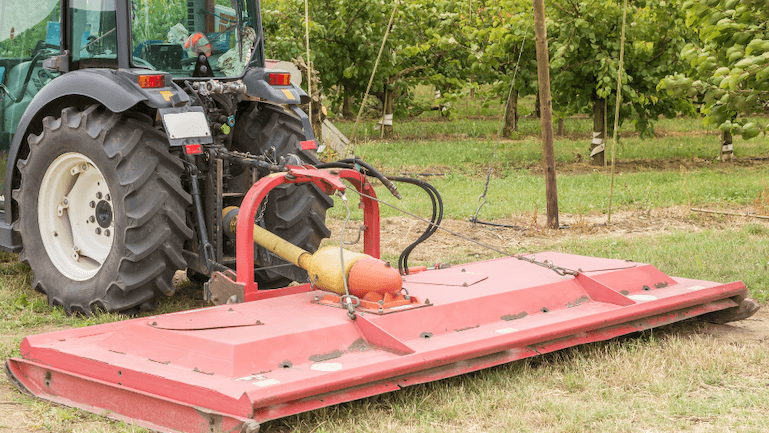
Sickle mulcher: application, special features and advantages
What characteristics does the sickle mulcher have as an expert for green spaces?
Sickle or rotary mulchers are often used for grassland maintenance, but also for mulching fields. It is hard to imagine landscape maintenance without the sickle mulcher. But how does the sickle mulcher actually work and what advantages does it have over other equipment for grassland maintenance, such as the flail mulcher? We explain what characterizes the sickle mulcher as a machine.
How does a sickle mulcher work?
As with a lawn mower, sickle mulchers use fast-rotating, horizontal blades to cut the grass clippings. The cutting height is adjusted via wheels so that the cutting height can be individually adjusted. Blades with two cutting planes are also available for sickle mulchers to increase the shredding effect. With the sickle mulcher, the clippings are evenly distributed on the ground by the rotating blades.
What are the advantages of a sickle mulcher?
Mulching has numerous benefits for the soil, as it not only improves soil quality, but also protects against erosion and reduces water evaporation and weed pressure. The particular advantage of a sickle mulcher over a flail mulcher is its significantly lighter design. This not only means that sickle mulchers can also be offered for less powerful tractors, but also significantly higher working widths. The sickle mulchers also impress with a particularly clean cutting pattern. For this reason, sickle mulchers really come into their own in the field or on grassland.
What are the disadvantages of a sickle mulcher?
Due to its fast-rotating, horizontal blades, the sickle mulcher is susceptible to wear or damage from foreign objects and stones. In addition, the sickle mulcher's blades are not suitable for shredding coarser materials such as branches or small logs. For this reason, sickle mulchers are less suitable for use in forestry, on uneven terrain or in stands with woody vegetation.
What is the difference between sickle mulchers and flail mowers?
Although both machines are mulchers, flail and sickle mulchers have different features. Flail mulchers work with a shaft that is driven in the opposite direction to the direction of travel and on which there are many movably mounted blades. This makes flail mowers significantly more robust and also suitable for mulching woody vegetation. Sickle mulchers, on the other hand, work with horizontal blades. As a result, they achieve a finer cutting pattern than the flail mower, but are more susceptible to damage from foreign objects and are not suitable for woody material.
What are the areas of application for the sickle mulcher?
Sickle mulchers are used in very different areas. In agriculture, rotary mulchers play a particular role in the maintenance of grassland, but are also used for mulching fields. The sickle mulcher shows its advantages here, especially on larger plots, as there are models with particularly high working widths.
Sickle mulchers are also popular in orchards and vineyards: some models can be steplessly adjusted to the width of the rows thanks to hydraulic linear width adjustment, thus ensuring optimum grass trimming between the individual plants. But the sickle mulcher also has its place in landscape and green space maintenance: the machine is used to keep lawns in shape, especially in parks, green spaces and sports facilities, as its extremely clean cutting pattern enables neat and even regrowth.